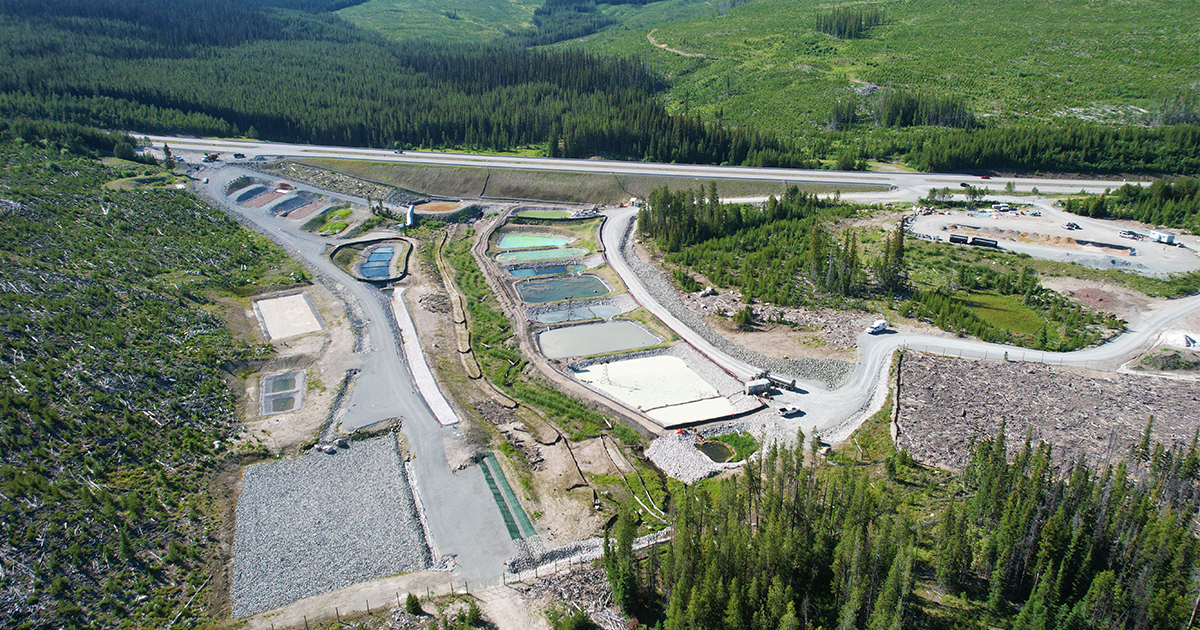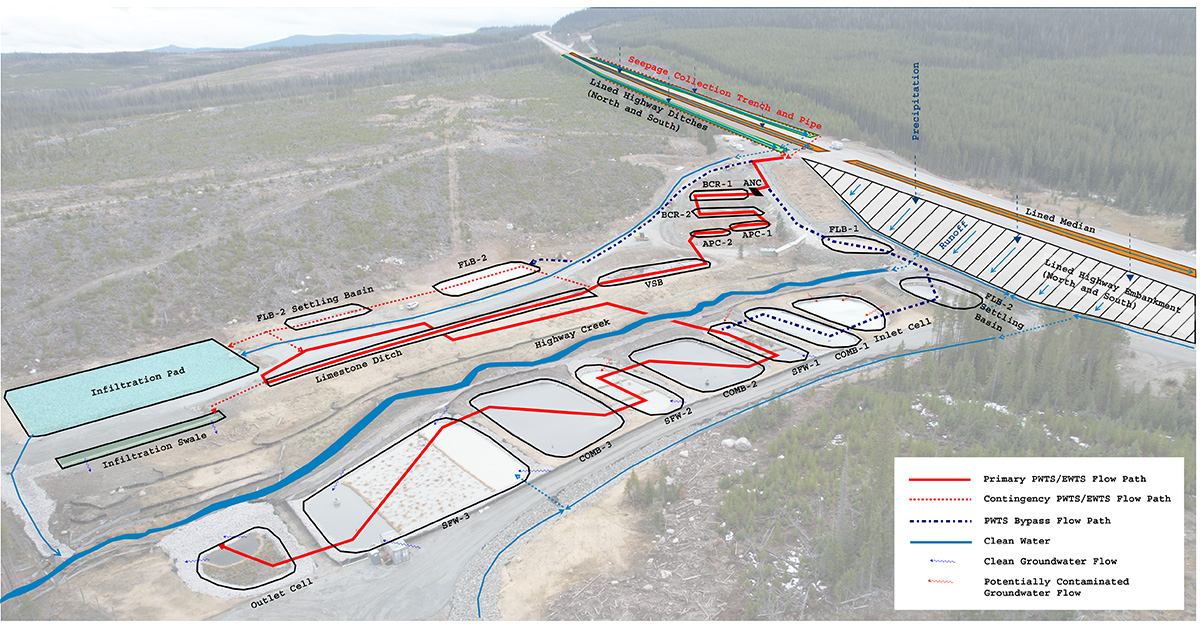Highway Creek Acid Rock Drainage Project
The Highway Creek Acid Rock Drainage Project is located approximately 32 km west of West Kelowna on Highway 97C at the crossing of Highway Creek.
During construction of Highway 97C the road cut through a mineralized area at the Highway Creek crossing, resulting in acidic, mineral rich seepage (called Acid Rock Drainage (ARD)) into the highway ditches, and ultimately, Highway Creek. MOTT has now constructed a water treatment facility to treat the affected water.
Location
The project site is on BC MOTT right-of- way for Highway 97C.
It is located at a latitude of 49°54'37.61"N and longitude 120° 4'34.97"W.
Project scope
- Capping road fill in the area with an impermeable cover to reduce the volume of acidic water generated. This cover prevents clean water (i.e. rain and snow melt) from contacting the acid generating rock under the road. In the median, the engineered cap extends 1.7 km to the east of Highway Creek, and 0.12 km to the west. In the ditches, the cap extends on either side of the highway for approximately 0.8 km, and on the 18-m high embankment slopes on either side of the highway at Highway Creek.
- Treating collected water by constructing a passive water treatment system (PWTS) consisting of a series of components, such as an acid neutralizing chamber, biochemical reactor cells, aerobic polishing cells, a vegetated settling basing and limestone ditch
- Treating groundwater and further treatment of collected water by constructing an enhanced wetland treatment system (EWTS) consisting of flushed limestone beds, settling basins, surface flow wetlands and a final outlet pond with a diffuse release to Highway Creek.
- Protecting and restoring Highway Creek by lining the creek downstream of the highway and building high-quality fish habitat through riparian improvements and in-stream complexing.
Project facilities
The project site includes a passive water treatment system (PWTS) and an enhanced wetland treatment system (EWTS). The two function as one system.
Passive water treatment system
The PWTS functions as a treatment train that starts with acidity neutralization, followed by two sequential biochemical reactors (BCR), two sequential aerobic polishing cells (APC), a vegetated settling basin where evaporation will also take place when climate conditions allow, and a limestone ditch.
Depending on water flow, the treated water is routed from either the settling basin or the limestone ditch to the first surface wetland (SFW1) component of the EWTS for further treatment.
Enhanced wetland treatment system
The EWTS has two flushed limestone beds (FLB) that flow into settling basins and are intended to neutralize acidity. These basins then flow into an inlet pond in the wetland and progressively treated water flows between unlined surface wetlands (SFW) separated by lined compostable organic media beds (COMB).
The discharge from the EWTS is via exfiltration to ground when water levels in the wetland are lower than elevation 1,570.3 m, and additionally via a rip-rap berm adjacent to Highway Creek when wetland water levels are higher than elevation 1,570.3 m.
Legend:
PWTS - Passive water treatment system
BCR - Biochemical reactor
APC - Aerobic polishing cells
SFW - Surface wetland
EWTS - Enhanced wetland treatment system
FLB - Flushed limestone bed
SFW - Surface wetlands
COMB - Compostable organic media beds
Illustration of the PWTS and EWTS treatment train components on the project site landscape.
Activities at site
As of March 17, 2025, MOTT is operating under a final waste discharge authorization.
Discharge via the outlet pond in the EWTS will be 24 hours per day 7 days a week, 365 days per year.
Engagement
MOTT has engaged with First Nations in the area for the past several years and has included bands in construction activities and monitoring opportunities. Public notifications were conducted during the waste discharge application period in 2024.
Authorizations
- MOTT is operating pursuant to the terms of the final waste discharge authorization (Authorization #112005)
Contact information
Friendly Url for this Page:
gov.bc.ca/HighwayCreekAcidRock
Rachelle.Evans@gov.bc.ca
Subscribe
Enter your email address to subscribe to updates of this page.


